 Want to start editing your own videos but aren't sure how?
Want to start editing your own videos but aren't sure how?
Looking for a powerful tool to keep video production costs down?
Whether you're publishing video to your vlog, blog, or social media, editing your footage helps you present a consistent experience to your viewers.
In this article, you'll discover how to edit your video content with a free tool so you don't break your budget.
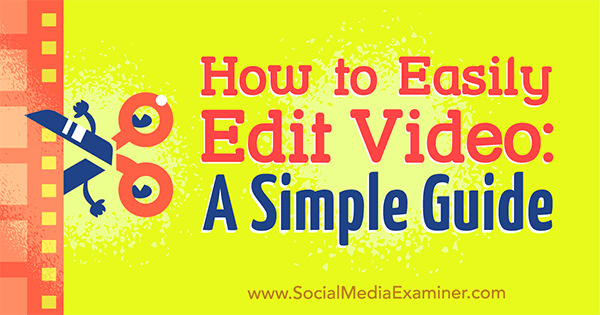
#1: Start Your Video Project
Note: While this article uses HitFilm Express to illustrate the editing workflows, the tactics I share can be transferred to just about any video editor with an adjustment for interface differences.
HitFilm Express works on both PC and Mac. It's free and there are no watermarks, file size restrictions, or length limitations. To download and install the software, head to www.hitfilm.com/express and click Let's Do This and then Get HitFilm Express Free.
You'll have to share a link to the software on Twitter, Facebook, or Google+ to get the download link. After you've completed your share, follow the on-screen instructions to install the software on your machine.
When you first open HitFilm, you see the home screen.
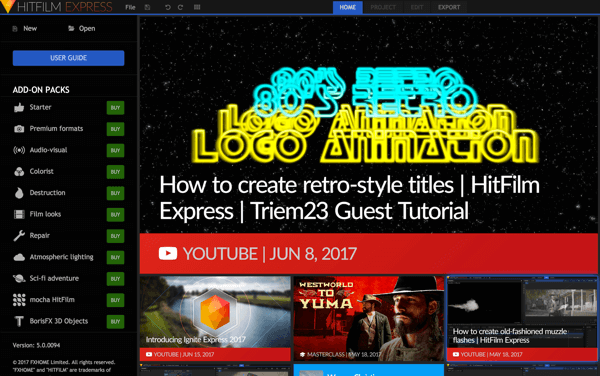
To start a new project, click New in the upper-left corner of the screen.
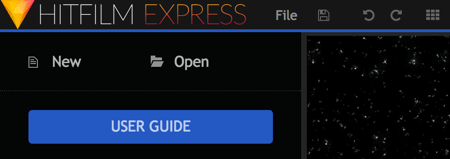
Now you need to choose your project settings. The default settings are fine, but if you're a bit more advanced, you can play around with the other settings.
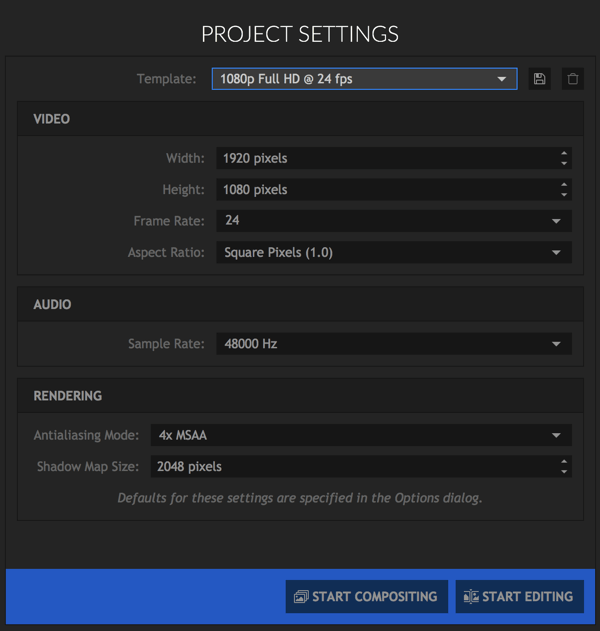
One cool option is that you can create square videos. Just select the Instagram template from the drop-down list.
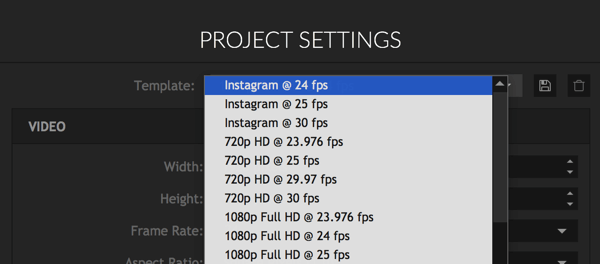
The square option is great for creating videos for Instagram specifically, but it can also work well on platforms like Facebook and Twitter, where users often view videos in portrait mode on their mobile devices.
After you choose your project settings, click Start Editing.
Get World-Class Marketing Training — All Year Long!
Are you facing doubt, uncertainty, or overwhelm? The Social Media Marketing Society can help.
Each month, you’ll receive training from trusted marketing experts, covering everything from AI to organic social marketing. When you join, you’ll also get immediate access to:
- A library of 100+ marketing trainings
- A community of like-minded marketers
- Monthly online community meetups
- Relevant news and trends updates
#2: Import Your Media Files
The editor may look a little confusing at first, but once you know your way around, it's pretty easy to use.
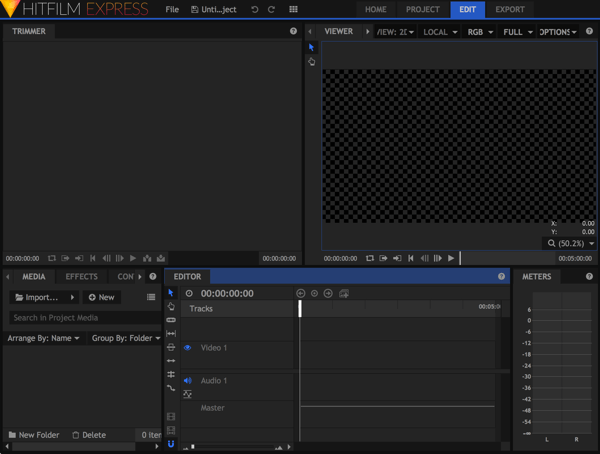
The first thing you need to do is import your media files, the raw files that you'll edit to create your video. These files will most likely be a mix of images, videos, and audio files.
To add your files, click the Import button on the Media tab (in the lower-left corner of the screen) or simply drag and drop your files.
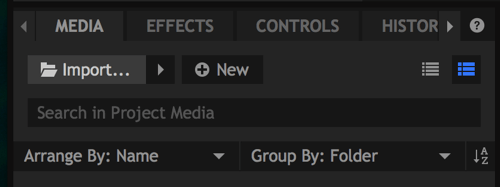
All of the files you imported will appear on the Media tab.
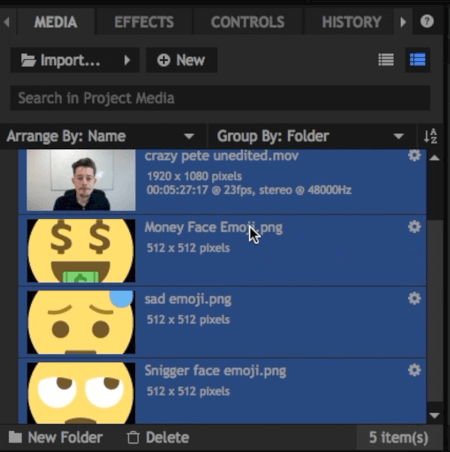
#3: Trim Footage and Add It to the Timeline
Now click the video file you want to edit first. It will open in the Trimmer section in the top-left corner of the screen.
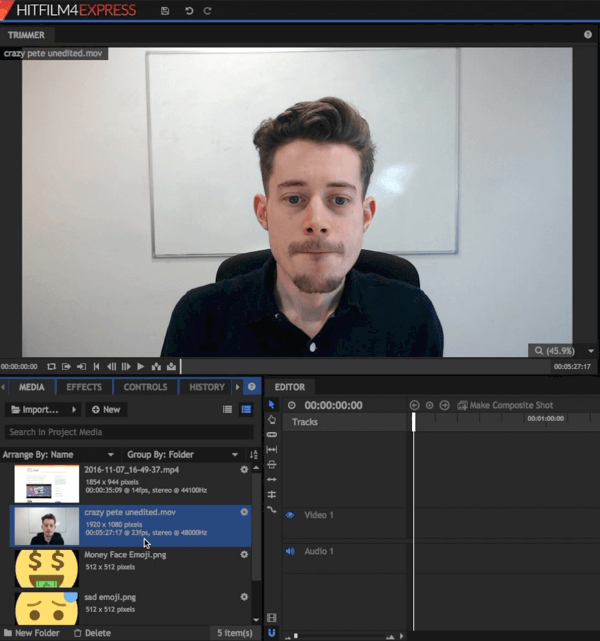
In the Trimmer section, drag the slider to scrub through the raw video. Use the In and Out buttons to select which parts of the video you want to use.

After you've selected your in and out times, drag that portion of the video to your timeline in the lower-right corner of the screen. While editing your file in the Trimmer first isn't always necessary, it's helpful if you want to work with only a small scene in a long raw video file.
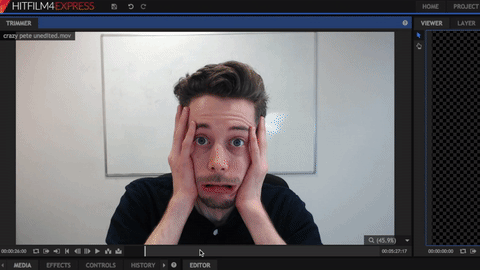
Important note: You may see the pop-up below. If your imported video is a different quality from the video size you selected in Project Settings, click Yes to make sure everything matches up.
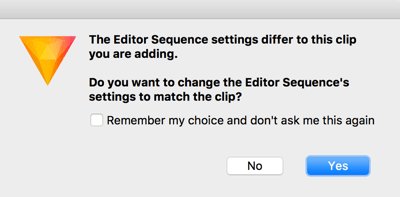
#4: Build Your Video in the Timeline
Your timeline makes up your video and once you have footage in your timeline, you can play your video in the Viewer at the top right.
You'll notice the video and audio are split into different “tracks” on the timeline. This allows you to layer footage and images on top of each other, and edit the audio and video separately if needed.
Edit Individual Tracks
Once you have footage in the timeline, you can edit it from there, too. If you want to trim the starts and ends off each clip, for example, click and drag in from the left or right.
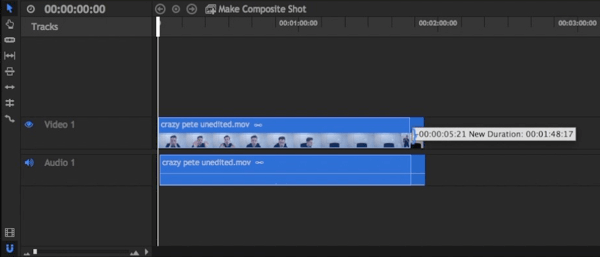
If you want to create a “jump cut”-style video where you edit out pauses, use the Slice tool, shown below.
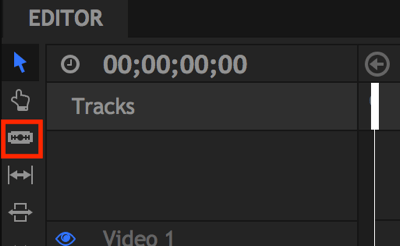
To delete part of a clip (as shown below), select the Slice tool and click the beginning and end of the portion you want to cut. Then click the Select tool (the arrow icon), click the clip you want to cut, and press Delete on your keyboard.
Finally, drag the footage back together. Notice how HitFilm snaps footage together to make it even easier.
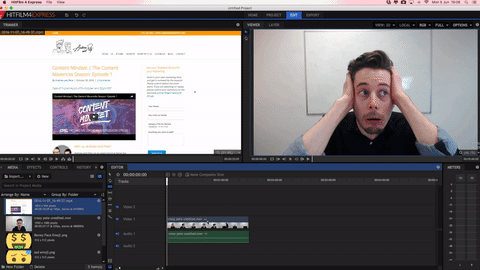
To make your editing as accurate as possible, use the Zoom feature. It lets you zoom into your timeline so you can see exactly where the cut needs to be.
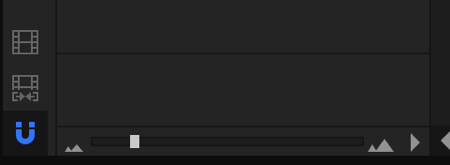
Don't worry about making mistakes. Open the super-handy History tab to undo any edits you've made.
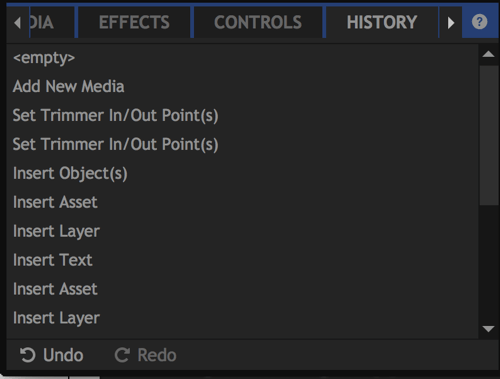
Add Files to the Timeline
To add another media file to your project, drag a clip from your media library so it appears above your original video file in the timeline (audio files go below).

Discover Proven Marketing Strategies and Tips
Want to go even deeper with your marketing? Check out the Social Media Marketing Podcast! Publishing weekly since 2012, the Social Media Marketing Podcast helps you navigate the constantly changing marketing jungle, with expert interviews from marketing pros.
But don’t let the name fool you. This show is about a lot more than just social media marketing. With over 600 episodes and millions of downloads each year, this show has been a trusted source for marketers for well over a decade.
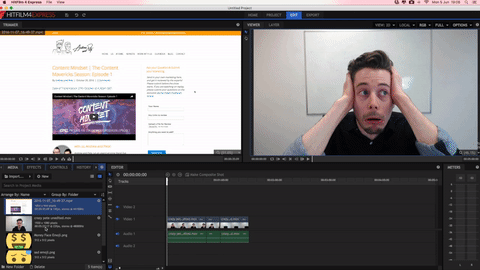
Using the Viewer in the top right, you can resize and reposition to change how the files look in the finished video. If you set start and end points in the timeline, you can see when the new tracks begin and end.
If you want to get a bit fancier and have new tracks or scenes transition on-screen, open the Effects tab. Pick one of the available transitions, and drag and drop it onto the timeline at the start of the clip you'd like to transition.
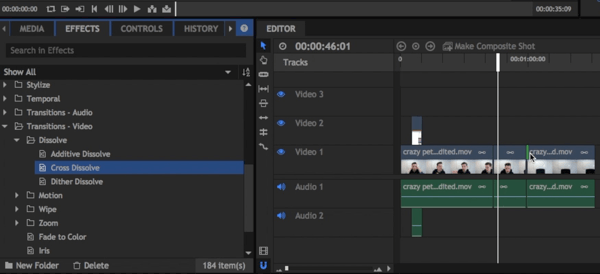
Add Text to Your Video
The final technique I want to cover is how to add text. On the Media tab, click the New button and select Composite Shot from the drop-down menu.
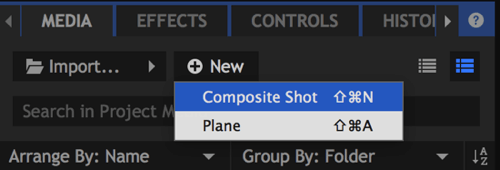
In the dialog box that opens, give your composite shot a name and click OK.
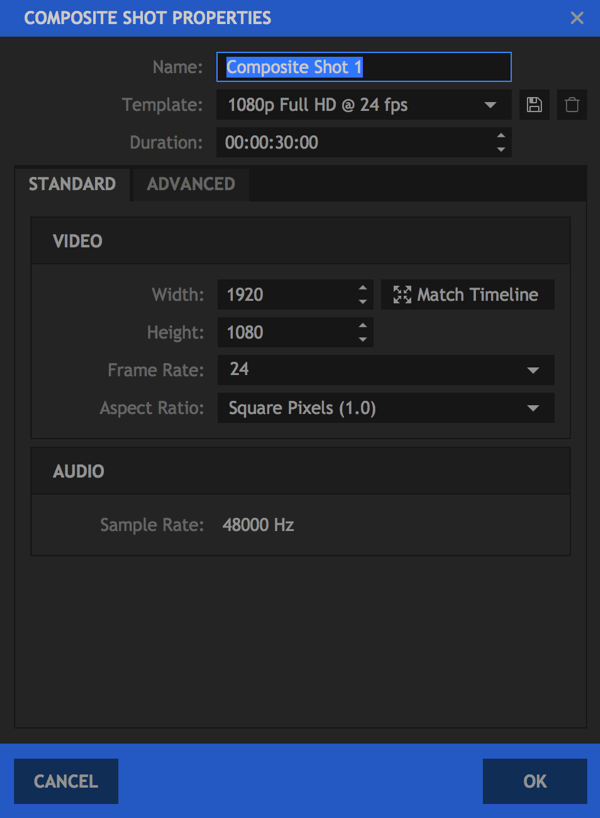
In the Viewer, you can now create your own composite shot. To add text to it, click the Text icon.
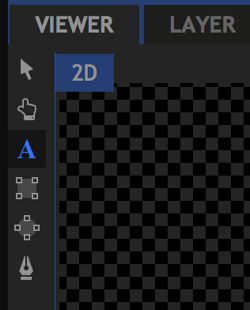
Then draw a text box and type your text into it. When you're finished, highlight the text you added.
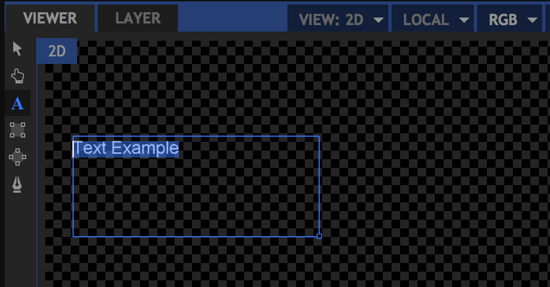
In the lower-left corner of the screen, open the Text tab (to the right of the History tab). You can edit the colors, fonts, and point size, and use any fonts you've installed on your computer.
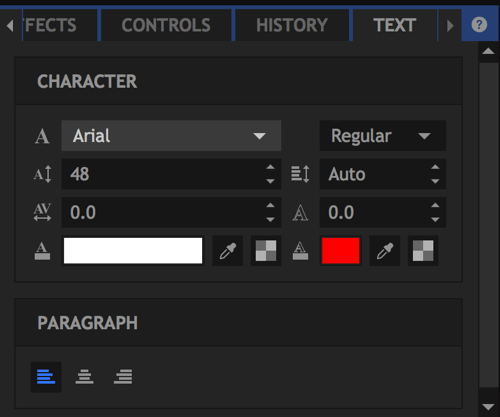
When you're happy with the text you added, click to return to the Editor tab.
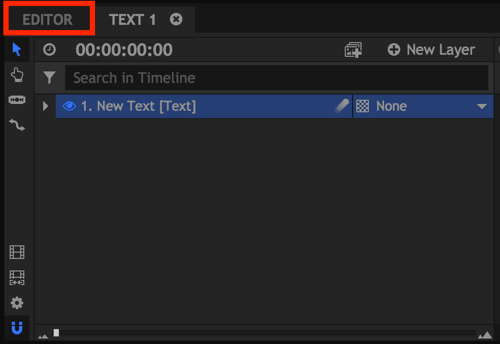
Your new composite shot is now listed along with your other media files. Just as you would do with any image, drag and drop your new composite shot onto your timeline.
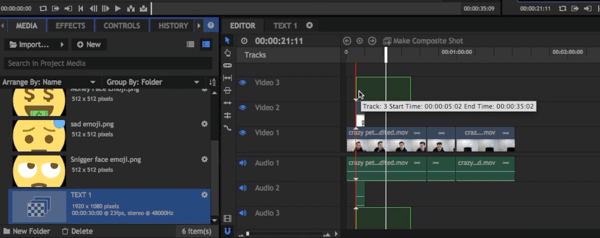
Pro Tip: Edit by Sound
When you're editing video, a big time-waster can be watching your video over and over to find the bits to cut out. A good filmmaking practice for avoiding this is to make a noise (often a loud double clap) while recording to signify which take was the best.
For example, suppose you mess up a line three times but get it right the fourth time. If you double clap immediately after the fourth time, that sound will show up as a peak in your audio that you can use as a guide to cut the other three takes without having to watch them.
Interesting fact: Using this method, a lot of editors actually edit their videos in reverse starting at the end!
#5: Export Your Final Video
When you're finished creating your video, you're ready to export it. First, click the Export Contents icon to the left of your timeline. This will add your whole timeline to the Export queue.
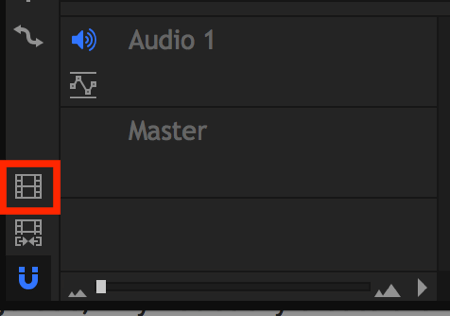
If you see a pop-up box asking if you want to Export Your Video right now, click Go to Exporting, which will open up the Export tab.
On the right side of the Export tab, you'll see a list of presets to choose from. The YouTube 1080p HD MP4 option is a great standard option that will download your video in a HD format to upload where you like.
Note: Although the preset is called “YouTube,” it's not just for YouTube; you can upload the video to other platforms if you want.
On the left, you'll see your export queue. Click the Output path to change the filename and select where the file will be saved.
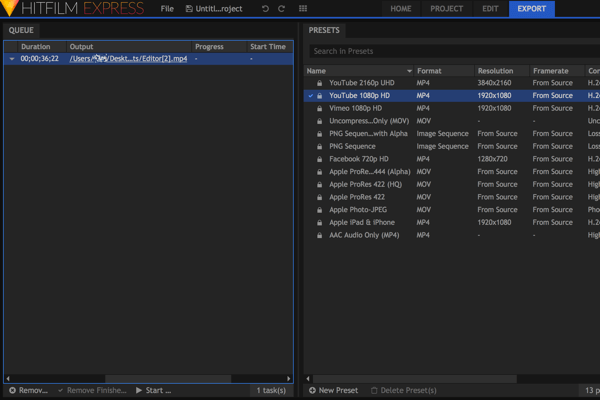
Click Start Exporting at the bottom of the screen to export your file.

You'll see the progress bar start to go up as the file is downloaded to where you specified on your computer.
Check out the video below to find out more about how to use HitFilm Express.
.
Time-Saving Keyboard Shortcuts
It's important to become efficient with video editing. The first vlogs we did took almost all day to edit, but now the process only takes between 30 mins and 2 hours, depending on length and complexity.
Here are some of my favorite HitFilm Express keyboard shortcuts to make editing much quicker:
General
- Undo: Ctrl + Z
- Redo: Ctrl + Y
- Reset: Ctrl + R
- New project: Ctrl + N
- Open project: Ctrl + O
- Save project: Ctrl + S
- Save as: Ctrl + Alt + S
- Switch to Home screen: Ctrl + 1
- Switch to Project screen: Ctrl + 2
- Switch to Edit & Effects screen: Ctrl + 3
- Switch to Export screen: Ctrl + 4
- Select all: Ctrl + A
- Remove selection: Delete
- Rename selection: F2
- Cut selection: Ctrl + X
- Copy selection: Ctrl + C
- Paste selection: Ctrl + V
- Duplicate selection: Ctrl + D
General Timeline
- Move playhead to start: Home
- Move playhead to end: End
- Jump to time: Ctrl + J (highlights current time indicator)
- Play/pause: Space
- Move playhead to previous frame: , or Ctrl + Left arrow
- Move playhead to next frame: . or Ctrl + Right arrow
- Move playhead back by 10 frames: Shift + , or Ctrl + Shift + Left arrow
- Move playhead forward by 10 frames: Shift + . or Ctrl + Shift + Right arrow
- Move playhead to previous edit point: Page Up
- Move playhead to next edit point: Page Down
- Set in point: I
- Set out point: O
- Set timeline in and out points to content: P
- Increase timeline scale: Ctrl + +
- Decrease timeline scale: Ctrl + –
- Scroll timeline to playhead: Ctrl + Home
Viewer Panel
- Move selected layer left by 1 pixel: Left arrow
- Move selected layer right by 1 pixel: Right arrow
- Move selected layer up by 1 pixel: Up arrow
- Move selected layer down by 1 pixel: Down arrow
- Move selected layer left by 10 pixels: Shift + Left arrow
- Move selected layer right by 10 pixels: Shift + Right arrow
- Move selected layer up by 10 pixels: Shift + Up arrow
- Move selected layer down by 10 pixels: Shift + Down arrow
- Select tool: V
- Hand tool: H
- Text tool: T
- Rectangle mask tool: R
- Ellipse mask tool: E
- Freehand mask tool: F
- Orbit tool: B
Editor Sequence Timeline
- Select tool: V
- Hand tool: H
- Slice tool: C
- Snap toggle: S
- Ripple delete: Alt + Delete
- Move selected clip left by 1 pixel: Left arrow
- Move selected clip right by 1 pixel: Right arrow
- Move selected clip up by 1 pixel: Up arrow
- Move selected clip down by 1 pixel: Down arrow
- Move selected clip left by 10 pixels: Shift + Left arrow
- Move selected clip right by 10 pixels: Shift + Right arrow
- Move selected clip up by 10 pixels: Shift + Up arrow
- Move selected clip down by 10 pixels: Shift + Down arrow
Conclusion
There is a ton of different video software available, but HitFilm Express is one of the most robust free solutions. This article just scratches the surface of what it can do, so it's worthwhile to download the program and try it out for yourself.
If you're doing a regular vlog where you have the same sound effects, intro/outro slides, backing music, and so on, you'll save time if you have a template file. Create your first video from scratch and then use it to create your template. For future videos, you can just duplicate the template file on your computer and drop your latest clips into it.
What do you think? Do you have any additional video editing tips to share? What video editing software do you use? Let me know if you have any questions in the comments and share your plans for creating your next video.
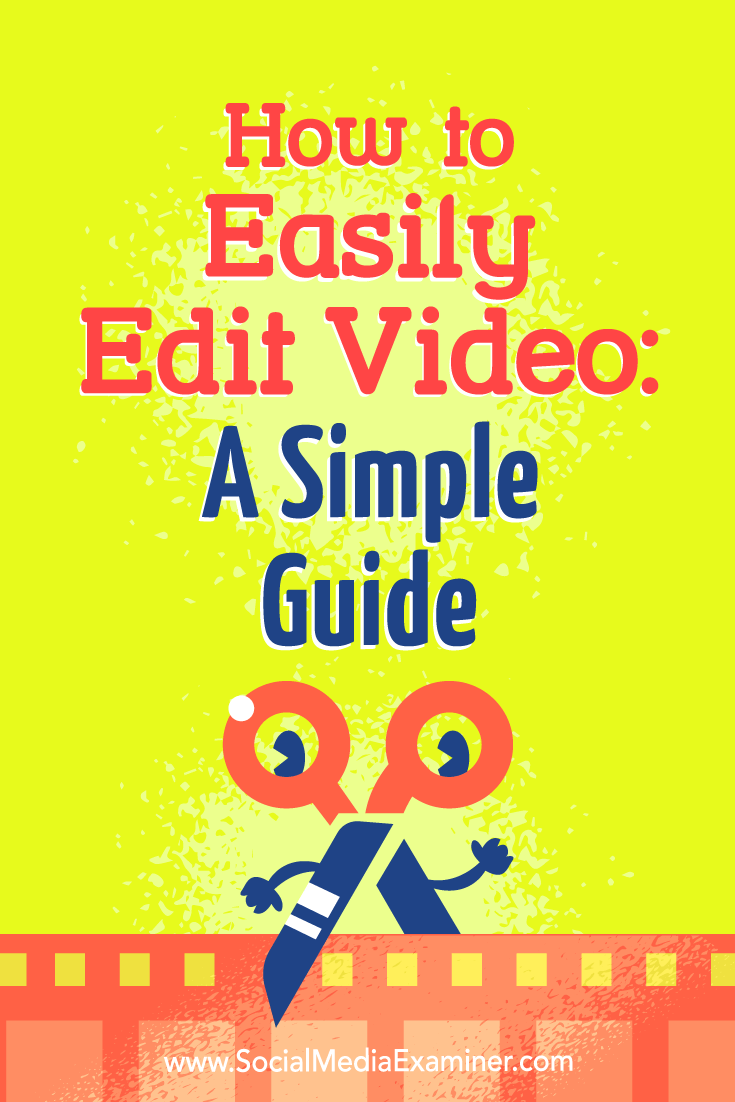
Attention Agency Owners, Brand Marketers, and Consultants

Introducing the Marketing Agency Show–our newest podcast designed to explore the struggles of agency marketers.
Join show host and agency owner, Brooke Sellas, as she interviews agency marketers and digs deep into their biggest challenges. Explore topics like navigating rough economic times, leveraging AI, service diversification, client acquisition, and much more.
Just pull up your favorite podcast app, search for Marketing Agency Show and start listening. Or click the button below for more information.

